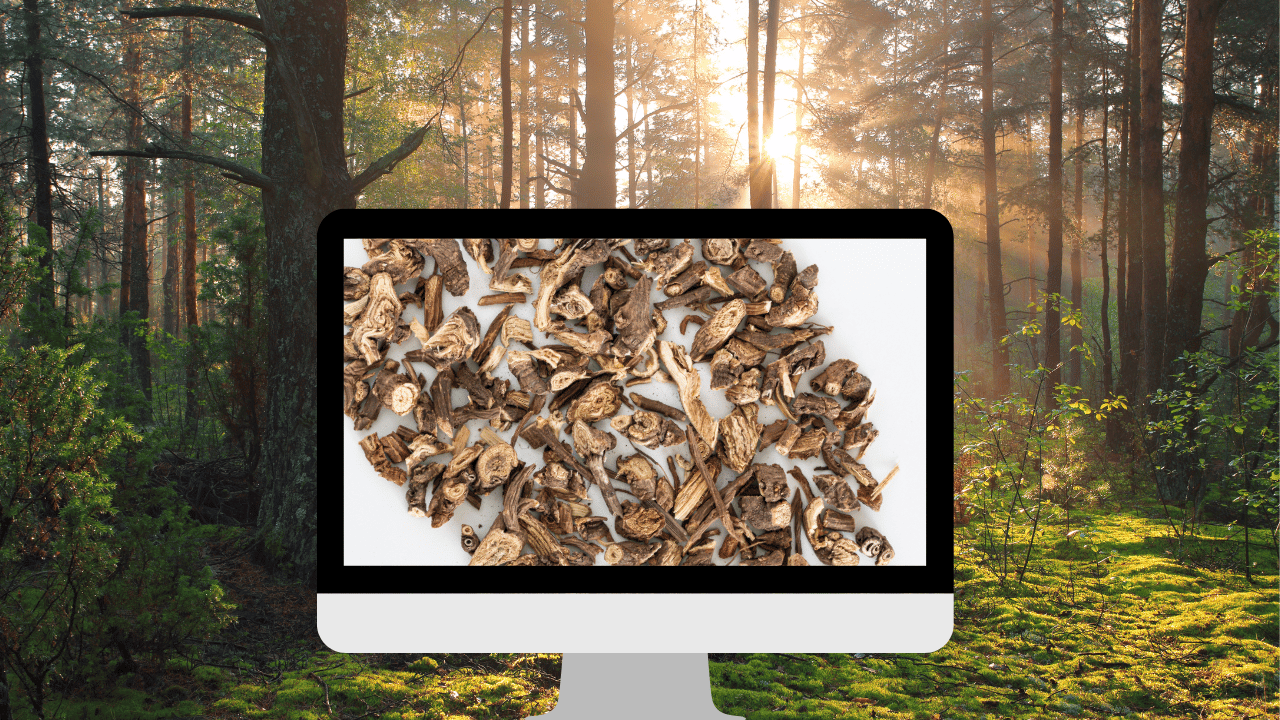Herbs | Last Modified:
Introduction to Bupleurum: An Ancient Herb with Modern Benefits

What is Bupleurum?
Bupleurum, commonly known as Chai Hu or Hare's Ear, is a powerful herb used in Traditional Chinese Medicine (TCM). The part of the plant that is most commonly used for its medicinal properties is the root (referred to as Radix in herbal terminology). This herb belongs to the Umbelliferae family. The most widely used species in TCM are Bupleurum falcatum L., Bupleurum chinense DC, and Bupleurum scorzonerifolium Willd. These species are prized for their medicinal benefits, particularly their anti-inflammatory properties.
However, it’s important to note that not all Bupleurum species are safe for medicinal use. Specifically, Bupleurum longiradiatum is a toxic plant that should not be used in any medicinal preparations. Essentially, Bupleurum may help the body activate its natural steroidal anti-inflammatory mechanisms, While the research on Bupleurum is promising, there are still many gaps in the scientific evidence. Nonetheless, the potential for Bupleurum to mobilize the body’s anti-inflammatory responses makes it a valuable component in the practice of Traditional Chinese Medicine.
In TCM, Bupleurum chinense is valued for its unique energy and flavor profile. It is described as acrid, bitter, and cooling. These characteristics play a crucial role in how the herb interacts with the body and balances its internal systems.
Where Bupleurum Grows and How It’s Cultivated
Bupleurum is a versatile herb that primarily grows in China and is widely cultivated throughout the central and eastern parts of the country. Beyond China, Bupleurum can also be found in other parts of Asia and Europe, making it a significant herb in traditional medicine across these regions.
Bupleurum chinense typically grows to a height of 45 to 85 cm and may or may not be branched. The plant features alternate leaves that are broad-linear to broad-lanceolate, ranging from 3 to 9 cm long and 0.6 to 1.3 cm wide, with a distinctive marginal vein. The plant produces compound umbels that are both axillary and terminal, showcasing yellow flowers. The fruit is ovoid, and the root is conical, with a brown color and dimensions of 6 to 15 cm long and 0.3 to 0.8 cm in diameter.
Bupleurum root benefits
Bupleurum chinense, or Bupleurum root, has been a cornerstone of traditional Chinese medicine for over 2,000 years. It is widely used as a tonic, known for its ability to strengthen the digestive tract, improve liver function, and enhance blood circulation by pushing blood to the surface of the body. Recent research in Japan has validated these traditional uses, confirming that Bupleurum effectively protects the liver. In TCM, Bupleurum is also used to address disharmony between the liver and spleen, which often manifests as abdominal pain, bloating, nausea, and indigestion.
This herb is widely used to manage various health conditions, including alternating chills and fever, liver enlargement, and prolapse of the uterus and rectum. It also plays a role in alleviating epigastric pain, nausea, indigestion, and irregular menstruation. Bupleurum is frequently combined with Astragalus to enhance its therapeutic effects, particularly in treating debility and prolapse, thereby supporting overall vitality and resilience.
Bupleurum is also utilized for chronic inflammatory disorders, especially those involving the liver or kidneys, and is beneficial for acute or chronic liver diseases, chemical liver damage, and poor liver function. Its anti-inflammatory properties, akin to those of milk thistle and licorice root, make it a valuable remedy for a compromised liver, contributing to its overall use in managing liver disease.
In addition to its liver benefits, Bupleurum chinense is commonly used in China to treat fevers, flu, and colds, particularly when symptoms include a bitter taste in the mouth, irritability, vomiting, abdominal pain, dizziness, and vertigo. Its versatility makes it an essential herb for a range of health issues, supporting liver function, managing digestive concerns, and addressing symptoms of fever and respiratory ailments.
How to Use Bupleurum: Preparations, Dosage, Duration, and Safety
Bupleurum is available in several forms, making it versatile for different needs. Here’s a guide to its preparations, dosage, recommended duration of use, and safety:
Preparations
- Dried Root: Commonly used for decoctions, which involve boiling the root to extract its beneficial compounds. It's also available in liquid extract, tablets, and capsules for more convenient consumption.
- Powdered Root: Another option, suitable for mixing into beverages or taking as a supplement.
Dosage
- Dried Root Decoction: The typical dosage ranges from 3 to 12 grams per day. This is often prepared by boiling the dried root in water to create a medicinal tea.
- Liquid Extract: For the 1:2 liquid extract, the recommended dosage is 4 to 8 mL per day or an equivalent amount depending on the specific extract concentration.
Duration of Use
- Long-Term Use: Bupleurum may be used long-term as long as it is taken within the recommended dosages. It’s advisable to consult with a healthcare provider for personalized advice on duration and dosage, especially for prolonged use.
Safety
- Bupleurum Root Side Effects: While Bupleurum is generally considered safe, minor side effects may occur in sensitive individuals. These can include digestive discomfort or mild allergic reactions. This flexibility in preparation and dosage, combined with its generally favorable safety profile, makes Bupleurum a convenient and effective option for supporting liver health and overall well-being. Always consult with a healthcare provider before starting any new supplement, especially for long-term use.
Closing Remarks
Thank you for joining us on this voyage through the benefits of Bupleurum! Understanding the power of natural remedies can enhance your approach to wellness. Stay tuned for more insights that support your health and vitality.
